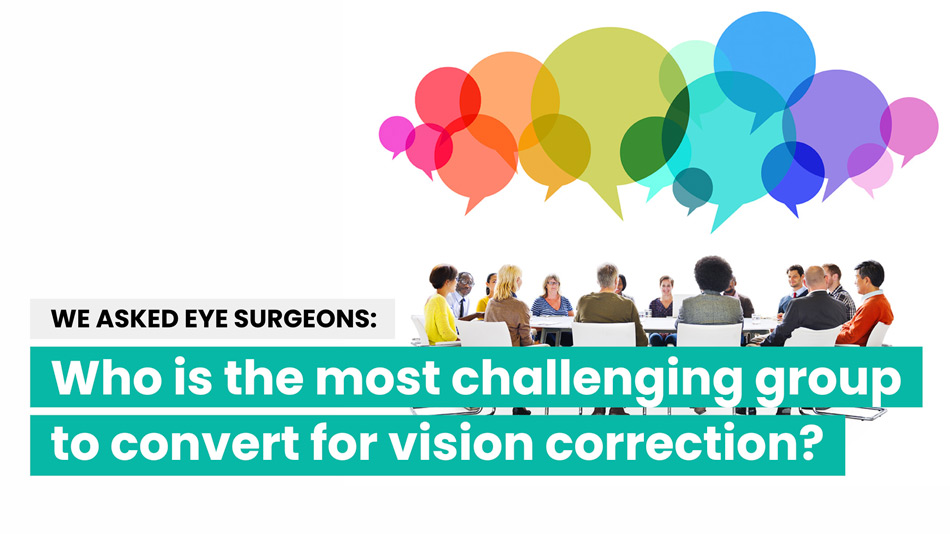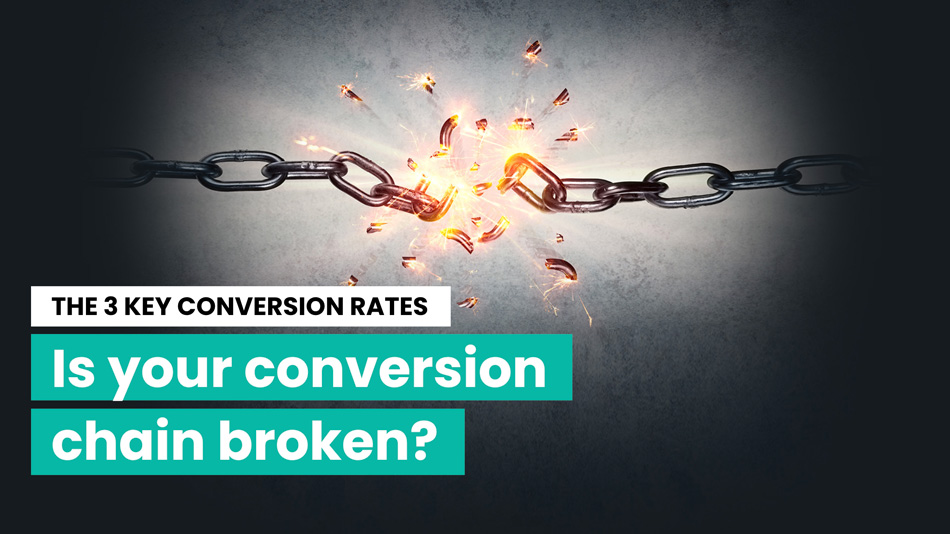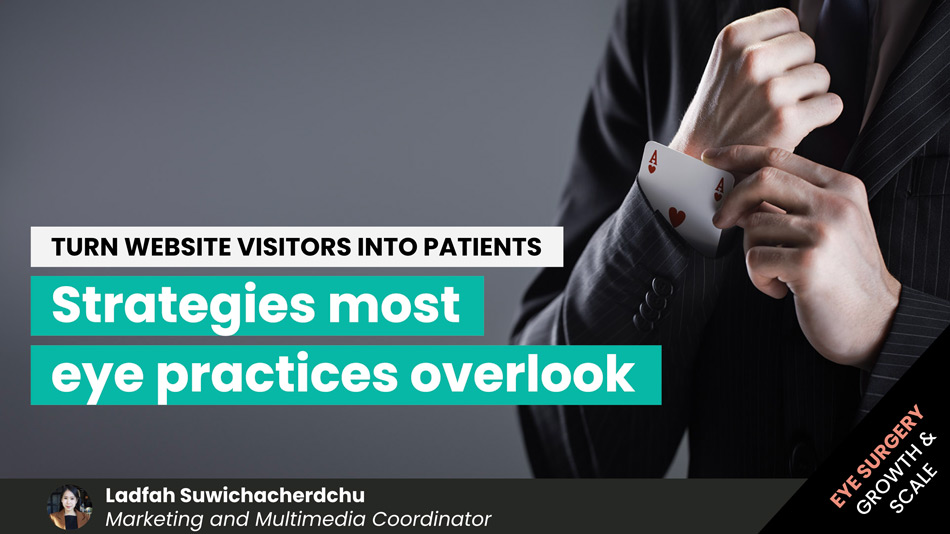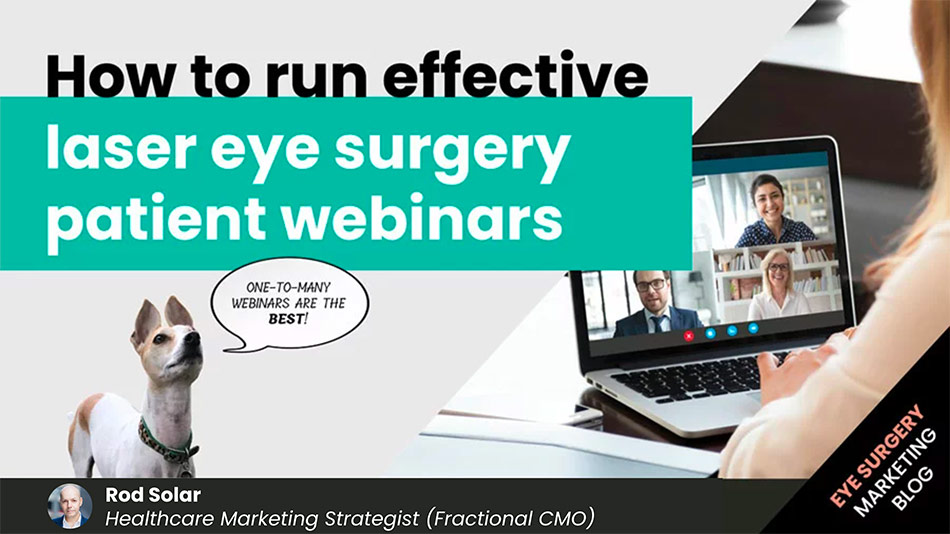
How to run effective laser eye surgery patient webinars
In the post-Coronavirus era, laser eye surgery clinics and LASIK surgeons are going to have to do more online. And with webinars on the rise, the laser eye surgery webinar has finally arrived. Just in the past month, we’ve seen four well-known UK laser eye surgery clinics run patient webinars including:
In this post, I’ll answer:
- What’s the purpose of a LASIK patient webinar?
- How do you promote a laser eye surgery patient webinar?
- What are the best tips when running a refractive surgery patient webinar?
- How should you move attendees at a patient webinar up the patient journey?
What’s the purpose of a patient webinar?
Know and stick to your purpose: You are not selling laser eye surgery at a laser eye surgery webinar. You are selling the first appointment!
Do patient webinars work?
Let me introduce you to my friend, Mr Michael King. I first met Michael in an online DigitalMarketer group to which we both belong. We discovered that we both not only do similar things (that is, market laser eye surgery) but that I also know his brother, Joe King, a refractive surgeon who runs King LASIK in Canada and the United States. Here’s a shot of Michael meeting up for lunch in London with Laura, myself, Facebook advertising guru Molly Pittman and a few other Digital Marketing Superstars.
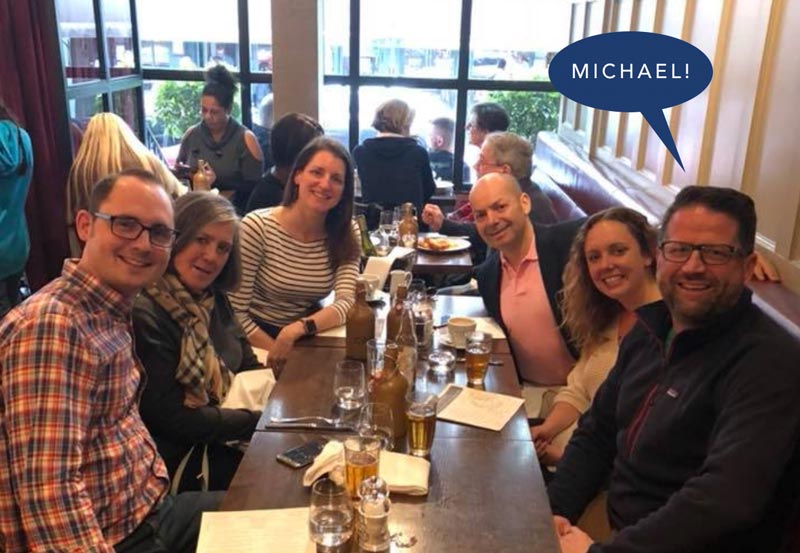
While back in the US, Michael’s been running LASIK webinars for his brother’s clinic (and others) for the past couple of years and he shared these fantastic case study results with me recently:
- 1213 registered attendees
- 649 consults booked
- 342 procedures held
- $1.33 MM in revenue
In one webinar that he ran in January 2019, he generated:
- 186 registered attendees
- 104 consults booked
- 33 procedures held
- 52 procedures expected – resulting in $202K in revenue
I’m sure you’ll agree that these are phenomenal results that should prompt you to seriously consider webinars as a tool to book more first appointments!
Note: Michael’s patient webinars all offer a time-limited incentive to attend the webinar and book a first appointment resulting in a significant discount ($1000 off with a bonus $250 sweetener at the end of the webinar). I’d like to see if we offer non-monetary incentives too, but testing offers will be necessary to know what works best.
Should you run a webinar or a physical event?
You may be thinking that your market isn’t quite ready for patient webinars. To be fair, Michael’s market is in the U.S., which together with Asia now, are often much further ahead than Europe. With that said though, and you can count on my 20 years of watching these markets develop to know that what happens there ends up happening in Europe eventually – almost without exception.
Secondly, if the COVID-19 pandemic has taught us anything, it’s that people who wouldn’t think of doing certain things online are going online.
Many clinics and hospitals run patient events – that’s nothing new. What is more novel is a patient webinar. While both have a place, there are significant advantages that webinars offer over physical patient events:
- Safety – Due to Coronavirus, group events aren’t as safe as they used to be, and some markets specifically don’t yet allow them
- Scale – You can communicate with hundreds of people without the limitations of physical space
- Evergreen – You can record the webinar and show it as often as you wish – and you can excerpt portions of it to use in social media or other web content
- Insight – Webinar and e-mail software offers insight through analytics that are harder or impossible to get from physical events
- Low-friction – Because attendees needn’t leave where they are to attend, your attendance rates can be higher at webinars than at physical events. Also, because they are likely to watch an on-demand webinar shortly after they register, you won’t lose as many people compared to face-to-face group events.
How can you market your patient webinar?
What works for Michael is to get attendees from:
- Paid traffic. Michael specifically suggests Google Ads over Facebook in this case. Why? Because Google Ad visitors will likely be further down the funnel than Facebook Ad visitors. But, you can experiment with both and see which works best for you.
- Your house list, which is all of the people who’ve contacted you and not yet booked the first appointment – you’ll need their e-mail addresses or mobile numbers to reach them over SMS. GoToWebinar suggests that a solid email campaign to your existing warm list should be your highest priority when enlisting webinar audiences, claiming that that email drives 57% of webinar registrations.
- Radio ads. For radio, he suggests starting to run ads two weeks before the event and then increase ad volume the week of the webinar and the day of – which keeps your event top of mind.
How webinar registration works
Michael attracts website visitors to his event every 6 to 8 weeks, including those who registered previously and did not attend.
He places a webinar opt-in banner on the website’s footer (you could also experiment with a pop-up) that shows up ten days before the webinar. Clicking this call to action button leads to the following steps:
- The button directs visitors to a specially-designed landing page – which sells the webinar and acts an opt-in form (here’s an example of a webinar opt-in page)
- After registering, the site directs the registrant to a thank you page that thanks the registrant for registering and offers them numerous opportunities to get more valuable content and to schedule the first appointment (for the keeners). The thank-you page also features credibility indicators (like 5-star reviews and testimonials).
How follow-up works
Upon registration, automated e-mail software sends registrants an e-mail with the promise of what happens at the event. It includes:
- Topics to be covered (see below)
- Top questions (see below)
- Q/A (see below) prompts for the audience
Then, the e-mail automation software sends a video indoctrination sequence, that includes:
- A video exciting the registrant about the event
- A call to action asking them to write down all their questions
- A call to action asking them to make a note in their calendar to attend
- A reminder of the discount offer
You can use popular email software like MailChimp or InfusionSoft to accomplish this.
Finally, the software sends the following flight plan of reminder e-mails and SMS messages. Suppose you’re presenting the webinar Wednesday or Thursday noon (GoToWebinar suggests mid-week is best). Most clinics run patient events in the evening, but Michael suggests lunchtime patient webinars for people who attend from work. Again, GoToWebinar has data on this, and they suggest 10 AM and 11 AM for a business audience.
Michael’s e-mail flight-plan looks like this:
- Send an e-mail Friday before
- Send an e-mail Monday of the week of the event
- Send an invite e-mail the day before the event
- Send the day of reminder e-mail (SMS is also a good idea)
Michael reports that this approach tends to generate an attendance rate as high as 64%. Frankly, that’s very high considering what I’ve seen at physical patient events which is typically 50% or less.
What is the ideal length and frequency of a LASIK patient webinar?
Michael recommends that events last between 30-45 minutes, which is ideal to fit into a lunchtime in the middle of the workday. GoToWebinar data suggests that 67% of registrations are for 1-hour events because people consider them of higher value. I have yet to see data in the business to consumer space, but like the length of copy, if it’s engaging the audience will stay put.
The event agenda time allocations look like this:
- Introductions and topics (15 minutes)
- Top questions (10 minutes)
- Guided Q/A – with audience text participation (20 minutes)
Who should run the patient webinar?
We both concur that a trained Master of Ceremonies (M.C.) should always lead the patient webinar. They can be a patient liaison or your marketing person. The M.C. needs to:
- Set the stage
- Present all the slides
- Ask the doctor or surgeon to answer questions
- Direct the surgeon on what contributions to make (to tell his or her story)
- Invite the attendees to book their first appointment
I like to offer a chat link to an online appointment booking page on the website and use a Q.R. code that participants can scan with their phones if watching the webinar on-demand.
Hosting the patient webinar
Both Michael and I recommend using Zoom webinars. This is distinct from the Zoom video call software you’re accustomed to using, by the way. Webinars is an add on that gives a lot more control and data from your webinar events.
Michael shared some top tips while hosting the patient event, which the M.C. needs to do:
- Communicate the plan with an intent statement, including setting up expectations regarding the ideal outcome of the event for the participant (booking first appointment to find out if attendees are candidates)
- Use future pacing (how easy is it? What’s recovery like? When you do see results?)
- Use the principle of pain and pleasure during the presentation (BEFORE) and (AFTER)
- Appeal to emotions and justify with logic with content
- Embrace speaking about their fears or “what’s holding them back?” e.g. top 5 questions people have about vision correction eye surgery
- Encourage attendees to ask questions throughout the event (only choose to answer questions that serve the masses publicly, divert all other items to chat)
- Make it easy to say yes to the next step (booking the first appointment)
- Have a limited time offer at the end (Michael uses $1000 off and an additional sweetener offer of $250 off if attendees attend the event in full and book within 48 hours. He opens the loop to the sweetener at the beginning of the eve and then offers it at the close).
- Pre-seed your Q.A. with FAQs
- Use gratitude and empathy throughout
Following up with attendees after the webinar
You can do all of this in an automated fashion, using Infusionsoft or a comparable automated e-mail provider like MailChimp. I suggest you send these e-mails within 48 hours of the event:
- A gain-oriented e-mail with a timer asking people to book the first appointment (with an online scheduler to reduce friction)
- A logic-oriented e-mail with the same timer and CTA
- A FOMO-oriented (fear of missing out) e-mail with the same timer and CTA
- A final e-mail telling them the offer has expired
How do you follow up with the people that did not attend the webinar?
Again, within 48 hours:
- An e-mail inviting them to see the webinar recording and book a consultation within 48 hours (they still qualify for the offer) with an online scheduler to reduce friction
- 2nd e-mail asking them again and a call-to-action
- 3rd e-mail asking them again and a call-to-action
- A final e-mail telling them the offer has expired
No time to run patient webinars or overwhelmed by what we’re suggesting? Let us do it for you
You might be excited about the prospect of running patient webinars. If you do, but find Michael’s and my advice above a tad time-consuming or overwhelming, then let us know and we can show you how easy it can be to let us do it for you!
(NOTE: Want to see how your practice marketing measures up against the best in class? Take this 5-minute quiz to see how you stack up in the 9 areas of practice marketing and get specific tips and advice on how you can improve your weak points and better leverage your strengths).
About the author
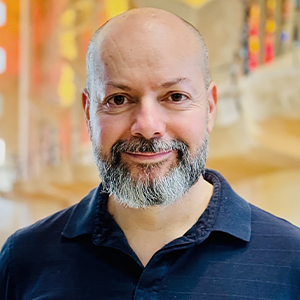
Rod Solar
Founder & Scalable Business Advisor / fCMO
Rod Solar is a co-founder of LiveseySolar and a Scalable Business Advisor for its customers. Rod mentors and coaches eye surgery business CEOs/Founders and their leadership teams to triple their sales, double their profit, and achieve their “ideal exit”.
Related Posts
Meet our Co-Founders
We’re passionate about helping leaders of high-quality, growth-minded practice owners double their practice revenue

Rod Solar
Founder & Scalable Business Advisor
For over 20 years, I’ve helped ophthalmology entrepreneurs scale their private practices. I specialise in doubling revenue within three years by offering a proven framework, hands-on experience, and a team of experts who implement what works. We take the guesswork out of growth and scale, so you can focus on delivering exceptional patient care while maximising the value of your business.
LiveseySolar completely transformed the way we were approaching this… We’ve gone from having just the dream of having a practice to having a practice up and running with people making inquiries and booking for procedures… It’s extremely pleasing. We feel lucky we connected with LiveseySolar.
— Dr Matthew Russell, MBChB, FRANZCO, specialist ophthalmic surgeon and founder of VSON and OKKO

Laura Livesey
Founder & CEO
I’m the co-founder & CEO of LiveseySolar. I’ve developed powerful eye surgery marketing systems that increase patient volumes and profits for doctors, clinics, and hospitals, since 1997.
Rod and Laura know as much about marketing surgery to patients as I know about performing it. They are an expert in the field of laser eye surgery marketing. They know this industry inside out. I believe that they could help many companies in a variety of areas including marketing materials, sales training and marketing support for doctors.
— Prof. Dan Reinstein, MD MA FRSC DABO, founder of the London Vision Clinic, UK






